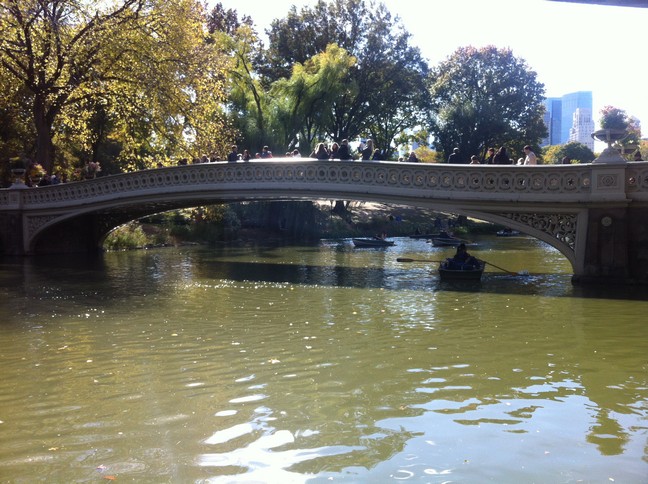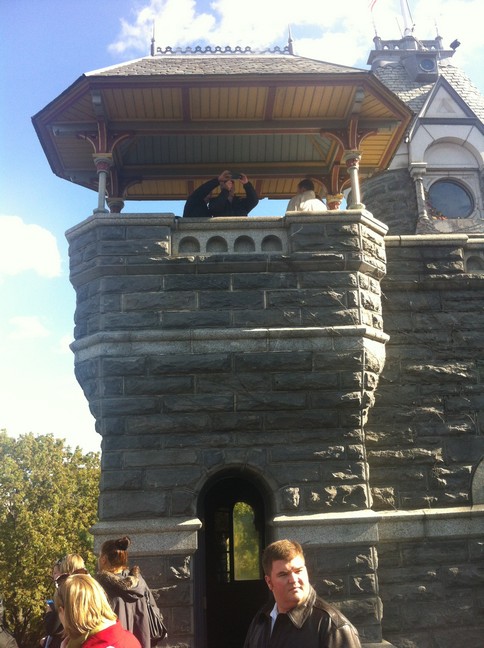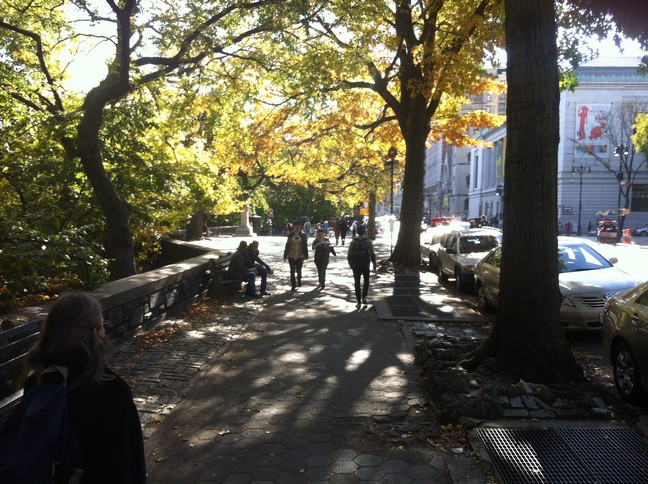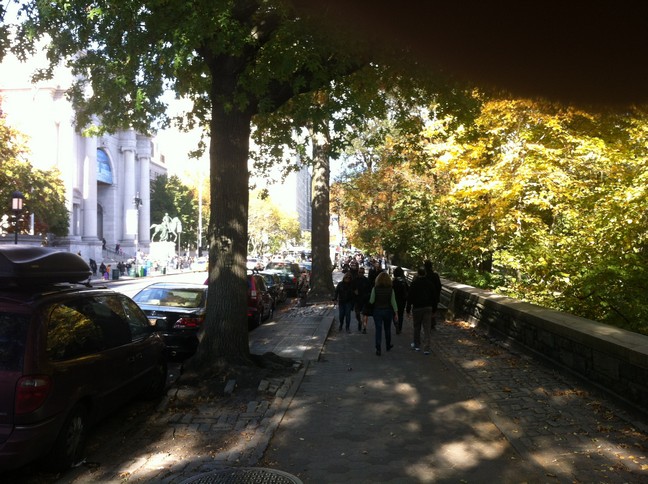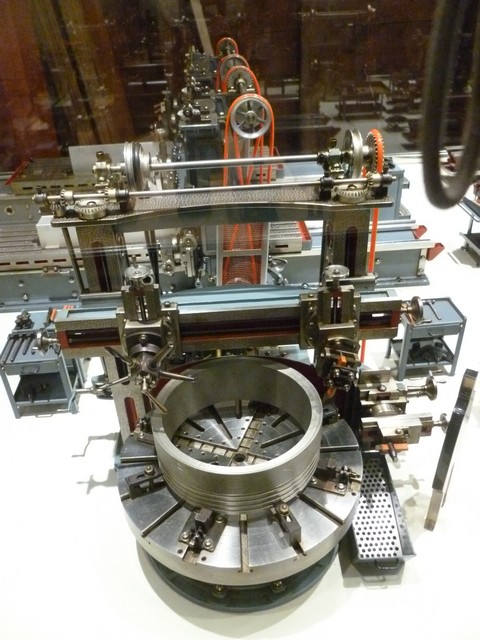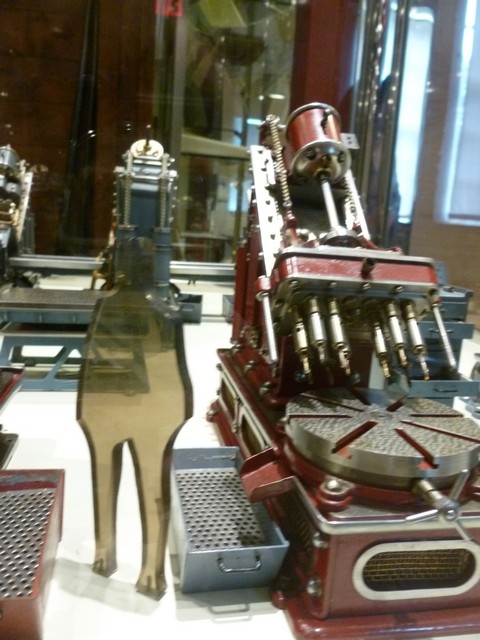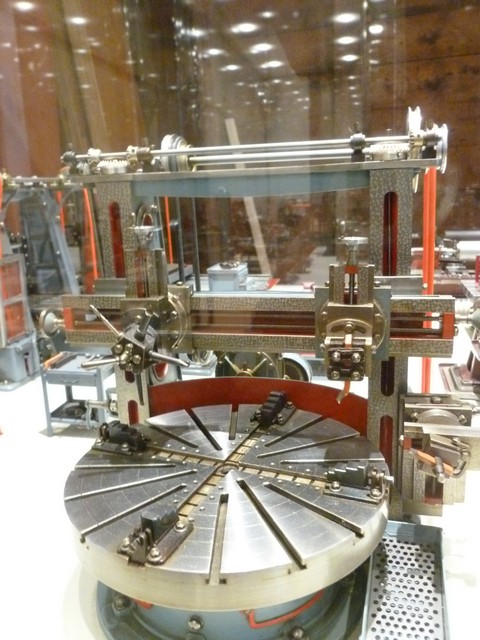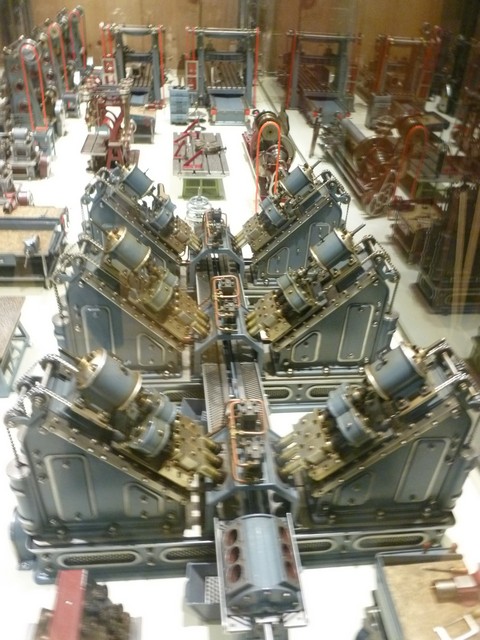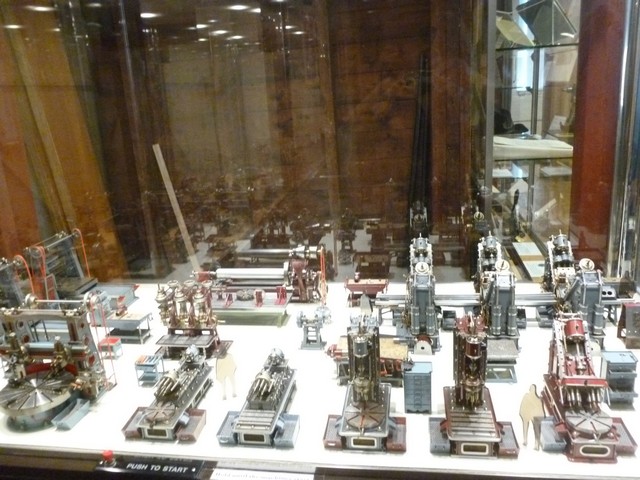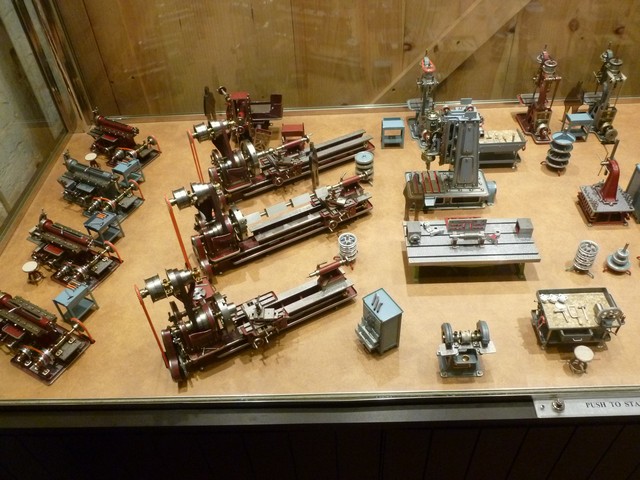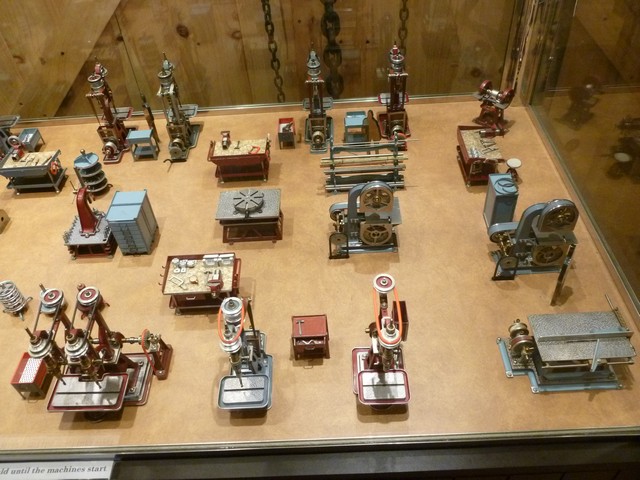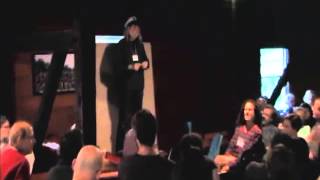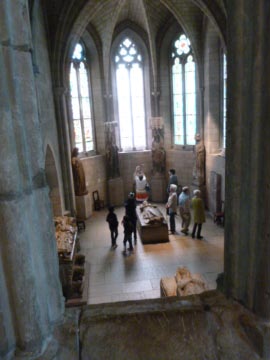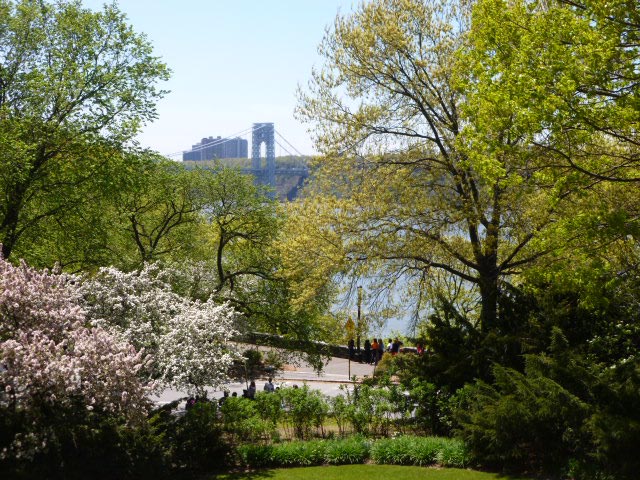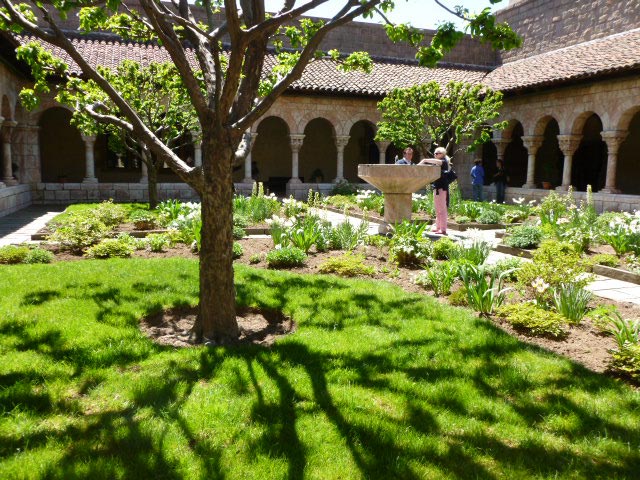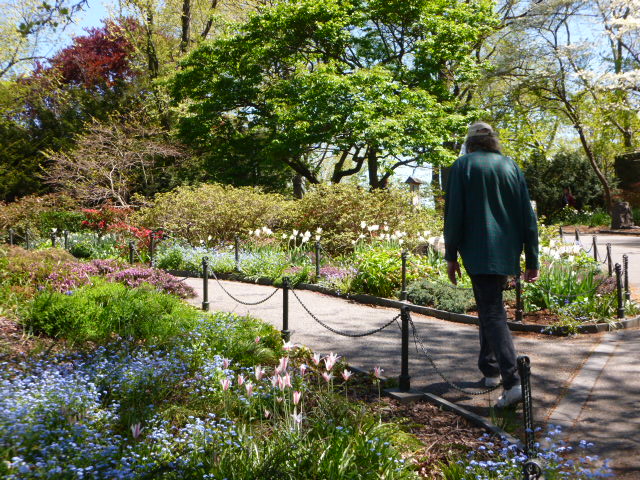December 17, 2013
Like Father, Like Son
Like me, my Dad was an engineer. He had arrived in this country in the late 20's as an immigrant from Sverdlovsk in the Ural Mountains in the Soviet Union with a high school knowledge of English. 4 years later, he graduated from the Polytechnic Institute of Brooklyn with a BSME in Civil Engineering. I suppose I inherited my proclivity for things mechanical from him. (And my love of music from my Brooklyn-born mother. My father couldn't sing a note.) At any rate, some 40 years later, I graduated from Brooklyn Poly with my degree in Mechanical Engineering.
Some time in the early '80's, I went to visit my folks for dinner, as I did on a regular basis. And through some convoluted path I don't recall, the conversation turned to the googol. (That was long before there was a Google.) For you non-techie types, a googol is 10100. (Ten to the one hundreth power, or 1 followed by 100 zeroes.) That's a very big number. a VERY big number. An inconceivably big number; and I mean that literally. The human brain is incapable of encompassing how large that number is. It certainly was well beyond my ken or my Dad's.
Well, we asked each other just how big is it? The number of atoms in the universe? The number of stars in the universe? The number of grains of sand on the Earth? Well, that last one we can actually calculate..or at least estimate. So, we undertook to do what engineers do when faced with seemingly impossible questions like that: we make an engineering first approximation.
Postulate an Earth covered with a spherical shell, 8000 miles in diameter and 10 miles thick completely filled with cubical sand grains .010 inches on each edge. Calculate the volume of the spherical shell. Divide that by the volume of a sand grain, and you'll find the number of sand grains on the Earth. Roughly.
OK. The sand grain was easy. The volume is .010 cubed, or .000001 cubic inches. The volume of the shell would be approximately the surface area of an 8000 mile diameter sphere multiplied by the 10 mile thickness. And then do the conversion from miles to inches. Easy. Except for one hitch: Neither of us remembered the formula for the surface area of a sphere. Volume, yes. Surface area, no. My reference books were at home. His reference books were at work. And there was no Google back then. What do we do?
Dad says, "OK, let's derive the formula by calculus." I looked at him blankly. Well, yes, it's a pretty straightforward derivation that we both did in freshman Calculus 101. But that was 10 years ago for me and 45 years ago for him. So we sat down at opposite sides of the dining room table, each with a pencil and a pad of paper and set to work. And he solved it. And I couldn't.
My estimation of the Old Man went up a couple of notches that evening. And it had been pretty high to start with.
Oh, and by the way, the formula is A=4πR2. And there are 8 x 1025 grains of sand on the Earth. A big number for sure, but inconceiveably smaller than a googol.
October 27, 2013
Central Park
Probably the last fine Sunday of the year. Jenny and I took the opportunity to stroll around Central Park in New York City. I wonder what Fredrick Law Olmstead would have thought of his finest creation a century and a half after he laid it out in what was then farmland and swamp north of what was then New York City. I'd say he did a magnificent job. I used to go there often in my youth. From Shakespeare at the Delacorte Theater to hanging around Bethesda Fountain with my guitar until the drum-circle crowd drove us out. It's all very recognizable, but it's changed in a lot of ways. More crowded than back then. More multi-lingual. More signs and maps identifying the places I knew, but not by name. The last photo is a crummy photo, but I'm proud of it. Look at the size of the parking space I squeezed Jenny's car into. Born and bred in THAT briar patch, B'rere Fox.
October 2, 2013
The Music Biz
Back in 1993, David Tamulevich, a member of the duo "Mustard's Retreat", recorded my recitation, "The Ballad of Jake & 10-Ton Molly" on their album 5 Years or 500,000 Miles. I was very proud to receive my first royalty check for the mechanical license.
In yesterday's mail I was surprised and delighted to find another unexpected check from them for $45.50 for their 2nd printing of 500 copies of the CD. (It's "gone balsa"). I'm well on my way to retiring on the income from my royalties. Isn't it a shame when the only honest people in the music industry work on a scale where it doesn't even pay to be dishonest?
July 28, 2013
Who Ya Gonna Call?
I solved a couple of problems this week through applied engineering.
A friend was keeping his old car in his back yard until he sold it. I got a call from him that he had moved the car from one place in the yard to another, and in the process straddled a low-protruding boulder in the ground. The undercarriage of the car got hung up on the rock, and he didn't know how to get it off. I thought about it for a bit and then said I'd be right over. I brought along my hydraulic jack and a length of 2 x 6. I got to his house, assessed the situation, and then placed the jack under the jack point on the side of the car closest to the rock. I jacked the car high enough to slip the 2 x 6 under the front wheel, and lowered the car onto the 2 x 6. That lifted the undercarriage well clear of the rock, but the length of board projecting rearward of the front wheel wasn't long enough to back the car clear of the rock before dropping the car back onto it. I couldn't reposition the board further rearward when the car was jacked up, because the jack itself was in the way. So we searched around his property and came up with a couple of lengths of scrap lumber, which we used to extend the wooden surface rearward enough to clear the rock. Started the car and backed it off its perch.
That gave me an idea to solve a problem that had been bugging me for years. I have a waterbed. There is an end-table between the side of the waterbed and the wall. When I first filled the bed, I discovered there wasn't enough room to walk between the table and the bed. That always made it a pain to tuck in the corner of the fitted sheets closest to the table. The waterbed weighs about 18,000 pounds, so it's no small job to move it once it's full. So I got out my trusty jack and 2 x 6 (the regular screw jack that comes with the car, not the big hydraulic jack) and applied them to the problem. I knew that I couldn't place the jack against the wall to push the bed, because the jack would have gone right through the wall before the bed moved. So I laid the 2 x 6 flat on the floor, and placed one edge against the wall. That distributed the force over a much larger area, which was also backed up by a number of studs behind the sheetrock, right at their strongest point where they were nailed into the sill plate. I then put another 2 x 6 against the base of the bed to serve as a cushion. And then I placed the jack sideways between the two boards close to the head of the bed. I then gingerly started cranking the jack, listening carefully to whence any creaking noises eminated. Happily, the noises came from the bed, not from the wall. I moved it over about 2-1/2 inches to a point where the edge of the bed was aligned to the joint between two floorboards. I then moved the jack to the foot of the bed, and moved that end to the same floorboard joint. Problem solved.
Not rocket surgery, but there is a great satisfaction in solving real world engineering problems, especially when I get it right the first time.
June 27, 2013
American Precision MuseumSo where do you take a gadget-geek like me when you want to show him the sights? I was up in Vermont visiting Jenny, and boy, did she find the spot! The American Precision Museum in Windsor, Vermont. The building, a mid-19th Century armory houses a collection of machine tools from that same era. These are lathes, milling machines, gun bore rifling tools, etc, all belt-driven from overhead lineshafts, and originally powered by steam or waterpower. They also have more modern machine tools as well, all the way up to a 3-D printer, happily and mindlessly making pieces for a most fanciful chess set. (The castles are complete with a spiral staircase inside the castle!)
But my favorite exhibit was a collection of 1/16th scale models of these metal-working machines painstakingly created by an old-time machinist named John Aschauer. Working strictly from memory he built exquisite working models, belt-driven by O-ring belts, right down to the gear-trains, working chucks, and miniature wrenches. Click on any of the photos to see it enlarged and in full detail.
May 29, 2013
Themes in a Hat
"Themes in a Hat" is a musical game I invented about 25 years ago. It was inspired by an experience I had at a festival where Cindy Kallet was leading a song-swap on the theme of Bird Songs. And as the turn went around people sang "When The Red, Red Robbin Comes Bob- Bob- Bobbin' Along" and "There Once Was An Ugly Duckling", and "Bye-Bye Birdie", and so on. And as each person started the song, there was that brief moment of "Oh yeah!" as recognition set in, followed by some lesser emotion, depending upon how proficient the singer was, and how good the song. So I wondered if there wasn't some way of concentrating the "Oh Yeah!" factor.
What I came up with was a cooperative non-competitive group game wherein the leader (me) comes up with a collection of topics or themes on index cards. (Remember index cards?) I put the cards in a hat and pull one out and read it. And anyone who has a song on the topic raises their hand. I pick someone, who begins their song, and the rest of the participants join in if they know the song. However the others who know an appropriate song keep their hands up. At some appropriate juncture in the song, I pick another hand, and the chosen person immediately begins his/her song, trying to make the music as continuous as possible. And so it continues, until anyone in the room who feels things are winding down can call out, "New Topic!", and I pull another theme out of the hat to start again.
We don't keep any score, but we do award "bonus points". You get bonus points if you use the same song in one topic that was used in a previous topic. You also get bonus points (and groans) if you use a song that is even vaguely connected to the topic by an egregious pun. (Classic example: The topic was "Rain", and Heather Wood had to duck various flying objects after she came out with, "And He shall reign forever and ever..." She got bonus points.)
It's a lot of fun. You don't have to sing well to do well. It is one of those rare activities that is equally engaging to adults and kids. And it has been one of the highlights of the Folk Project Festivals, where I've led the game for a quarter century. Recently, I've looked to try it in new venues. It's a little risky in a new setting. Without experienced players setting an example for newcomers to follow, or it might take some time getting off the ground. But I got to present it at the Flurry in Saratoga Springs this year with surprising success. So at the Folk Project Festival this past weekend, I asked Bill Henderson to video the event. I edited the hour-long session down to about 12 minutes, and it gives a good feel for the game. I will use that as a sales tool to other Festival presenters as an event I could run. Take a peek.
May 6, 2013
The Cloisters
I grew up in a 6th floor apartment in way upper Manhattan. In some ways it was a really choice piece of New York City real estate. It was solidly middle class, rent-controlled, in a predominantly Jewish/Irish neighborhood, located across the street from the A-Train station...and also across the street from Fort Tryon Park. I looked up out of my bedroom window at the tower of the Cloisters, which perches at the very top of that park.
The Cloisters is as unlikely a building as you are likely to find in New York City. It was as if some whimsical child-God had picked a 13th Century monastery out of his toy box and plopped there, overlooking the Hudson, saying, "Oh, I think this looks good here!" And in a way, that's exactly what did happen. In the '20s, John D. Rockefeller, who owned hundreds of acres of riverfront property along at the northern end of Manhattan donated all that land to the City to be used as parkland, to be capped by an honest-to-God European monastery
Mr. Rockefeller sent teams of archeologists to search out ruins of monasteries from the 11th through 14th Centuries in France and Italy, secure the rights to them, dismantle them stone by stone, and then rebuild them all into this gem of a structure. And then donated the building to the Metropolitan Museum of Art to house its Medieval collection, a goodly part of which was also donated by Rockefeller. As a 10-year old, I spent more time wandering that building (and getting hopelessly lost in it) than any kid has a right to. In those days admission was free. There are reliquaries, triptychs, tapestries (including the famous Unicorn Tapestry), jewelry, chalices, crucifixes, statues enough to tempt one into taking the vows. Oddly enough, I never did warm to the art, but the building itself was always magic to me. The building and its gardens. It's always been one of my favorite places to be, particularly in the spring when its gardens are just coming into bloom.
Jenny came for a visit from Vermont last weekend. I took the train into the City and met her outside the building. We spent the afternoon traipsing around the building and its grounds, and Fort Tryon Park as well. There was evidence of Hurricane Sandy's effects in the many downed trees in the park. But I still got a healthy dose of nostalgia looking down on my old home. I got to thinking about what my old bedroom looks like, and the apartment as well. I resolved to write a letter to "Current Resident, Apartment 6-B" of my old address and see if I can wangle a visit for my brother and me. We'll see what comes of it.
|
|
|
|
|
|
April 4, 2013
Sandy Hook + 4 Months
I'm hearing a lot of complaints from those opposed to the new Connecticut Gun Control Legislation about how the new law is punishing law-abiding gun owners. "Punishing" is the wrong word. "Punishing" implies retribution for misbehavior. They are not being "punished". They are being inconvenienced in the cause of the greater good.
To them I say I'm sorry about that, but suck it up. We are all inconvenienced in the cause of the greater good in one way or another. Taxes are a perfect example. Speed limits. Jury duty. Drinking age requirements. Community noise regulations.
Suck it up.
They point out their right to self-protection. To hunting. To their Constitutional rights. That's all bunk. Behind all of the protestation from gun owners, there is one major underlying attraction to firearms that shows through all the pious high-sounding self-righteous wallpaper:
Guns are fun.
And they are. They're enormous fun. I don't own one, but when I've had the opportunity to fire guns I've had a blast! (No pun intended.) I understand. I sympathize. I feel your pain.
But tough shit.
So you'll have to interrupt your fun after 10 rounds instead of 30. So you'll have to wait a couple of days for a background check before you can take home your new toy. And if a background check indicates you shouldn't have guns, well I don't give a crap. Hand over the piece.
Suck it up.
March 15, 2013
Cousin Joseph
I received a call from my brother Saul Wednesday night that my cousin Joseph had died. Joseph was the son of my father's sister Julia and her husband Gregory. They, like my father, came from the Soviet Union. They lived in Riverdale in the Bronx, only a couple of miles from us, and Joe and I were childhood playmates. However, the fates were not kind to Joe. He was troubled by afflictions physical and emotional all his life. I suppose these days he would have been diagnosed with severe ADD. He was erratic, socially inept and clumsy. In later years he lost his sight, and needed a cane to get around.
As I grew towards adulthood, he made me very uncomfortable, and I lost touch with him soon after I moved out on my own. By the time he achieved adulthood, he was unable to work or live on his own, and continued to live with his parents. Gregory died in 1994 and Julia in 2000. Fortunately they were well off, and had arranged for a trust fund to maintain his life with medical care and live-in caregivers. Joe continued to live in the apartment where he had grown up with the help of those caregivers. I had not seen or spoken with him in maybe 35 years.
My younger brother Saul essentially maintained contact with him and his family, and was executor of his will. Joe was politically active and a hard-core outspoken lefty. Due to his abnormal personality, his advocacy was of questionable benefit to his causes. But he had at least gathered around him a core of friends who accepted him for what he was, and apparently held him in great affection. Although he would not say it to anyone but his girlfriend and me, my brother considered him a burden. So it was with some relief, although tinged with sadness, that he made the trip from his home in Massachussetts down to the Bronx to attend Joseph's funeral. I joined him in support, and we were the only family in attendance.
In the last half of his life, Joe had turned towards Judaism which he never really practiced as a youth. He found there some comfort and companionship, and there were a good number of members of the congregation at his service. Also his longtime caregivers were evidently very fond of him, and I believe were the only ones who actually shed tears. After the service, we went in convoy to the cemetary on Staten Island where his parents and my paternal grandparents are buried.
The burial was a disaster. According to Jewish tradition, the coffin was lowered into the grave by some of the mourners. But the straps were not properly positioned. The coffin slipped and fell into the grave at an angle, the lid broke off, and Joe's body fell partially out. And some of the mourners had to climb into the grave, straighten out the coffin, put the body back in and put the lid back on. It was perhaps representative of how fortune had treated Joe all his life. I was glad he had people around him who loved him well enough to set him straight before covering him with earth.
At any rate the whole expeience brought to mind a poem I had written at age 22 after being bombarded by the interminable eulogies on the TV after the King assassination. I remembered the whole piece verbatim, which is indicative of something or other. I asked Saul to read it or have it read at my funeral. (30 or 40 years from now) I slightly revised the title today.
Upon Contemplation Of The Endless Eulogies For Dr. Martin
Luther King
Let no man write my eulogy.
My life will write its own.
Of what value are these words of sorrow and praise spoken over a well-preserved
piece of dead human flesh?
For those who grieve at my death, they will elicit naught but grief.
Those who rejoice at my death will not rejoice any the less.
Or the more.
And for those who came to my funeral because
they were invited,
or
thought it was proper
or
expected something from my will
or
whatever
The last words in the speech will only serve to finalize the end of me,
not preserve me in their minds.
Words bore.
If I am to be remembered, I will.
January 15, 2013
The Flurry
I'm excited! I'm booked at the Flurry this year. (Feb. 15 - 17, Presidents' Day weekend). I've wanted to perform at the Flurry ever since I first attended it about 10 years ago. This 3-day winter festival used to be called "The Dance Flurry", but dropped "Dance" from the title as they began to program more general folk music in addition to all the great dancing. And how I got the gig is an interesting story in itself.
Those who know me are aware that in addition to performing music, I'm also an avid contra dancer. Contra dancing is a uniquely American form of dance closely related to square dancing. The Flurry has always been one of the major events of the year in the contra dance community in the Northeast. I'd attended a number of times, always had a great time both dancing, and in the ever expanding music program. I applied to perform a number of times, but had been turned down, given the explanation that they wanted to focus primarily on acts local to the area.
Flash back to another festival: the Folk Project Spring Festival of 2012: I have been involved in that event for decades. And what has become a highlight of that festival for many is a musical game I invented called "Themes In A Hat". The goal of this game is for the assembled group to collectively create on the spot, a medley of songs and song fragments on a given theme or topic. The themes are written on index cards, and randomly selected out of a hat. Once it gets going, it's very fast and furious and silly, including songs connected with the topic only by the dint of egregious puns. It's one of the few events at the FP Fest where kids participate on equal footing with the adults. In recent years attendance and participation in this event has grown to about 70 or 80, and for many, this event has been the high point of the Folk Project Festival.
Well at the Spring 2012 FP Fest, one of the featured acts was Annie And the Hedonists. I knew these guys were all avid and enthusiastic singers, so I arm-twisted them into attending the "Themes" session. They immediately fell into the spirit, and had a great time. Well, as it turns out, one of the new members of that group was Peter Davis, the Artistic Director of the Flurry. After it was over, Peter came up to me and said, "We gotta get you to do this at the Flurry next year!"
Serendipity strikes again! I had no idea that Peter was A.D. of the Flurry. Well sign me up! What a thrill to have been invited to play after having been previously turned down. And I get to do a concert at the legenday Caffe Lena venue as well as the "Themes" session.
Actually, I had (and still have) a few concerns. "Themes In A Hat" works well when there is a sizeable cadre of experienced players who can serve as examples for newcomers. The game isn't hard or complicated. And you don't even need to be a good singer to take part. But it takes a certain willingness to leap into the fray, which doesn't come immediately to newcomers still getting the lay of the land. So I'm putting out the word to as many "Themes" veterans as I can to come out to the Flurry this February to help make this event work in a new setting and for a new audience. And those who haven't tried it, check it out. It's a blast!
Postscript -- February 20, 2013:
Well! That came out better than I'd hoped. My concert was not favorably
scheduled. It took place at the Caffe Lena venue, about 4 blocks from the
main site where 90% of the other activities were, and in the opening time
slot of that venue on Saturday morning. Nonetheless a respectable 40 or
so hardy souls trekked out to see me, and received me well. And according
to one volunteer at the venue, the following two acts, even though well
known in the area, did not fare so well. And to my pleasant surprise, about
50 came to the Themes In A Hat session, and immediately fell into the spirit
of the game. There were one or two ringers who had played before at the
Folk Project Festival, but the bulk were first-timers to "Themes". I'd say
all told 30 to 35 people took part, including a bunch of kids and a couple
of featured performers who popped in to check it out. I couldn't have asked
for more or better. (And to put the icing on the cake, all three days I
found a legal Mini-Cooper-sized on-street parking place within a block of
the hotel.) I extended my trip another 2 days, and went to visit Jenny in
Vermont.




